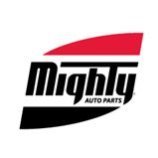-
Welcome to Auto Parts Forum
Whether you are a veteran automotive parts guru or just someone looking for some quick auto parts advice, register today and start a new topic in our forum. Registration is free and you can even sign up with social network platforms such as Facebook, X, and LinkedIn.
Lubegard Introduces Rustgard Rust & Corrosion Preventive Oil
-
Similar Topics
-
By Counterman
link hidden, please login to view, brand of the ADD Group, announced an expansion of Complete Strut Assemblies in the North American Aftermarket. The new applications cover light vehicles, SUVs and pickups. The launch includes models like Honda Pilot, Acura MDX, Jeep Compass, Audi Q5 and BMW X3, among others, according to PRT. “Our highly automated factories support both OE and Aftermarket production, providing the latest in innovation and technology,” explains Bruno Bello, director of global marketing at
link hidden, please login to view. “PRT is continually developing new products, bringing the best solutions to the aftermarket. These new additions expand our range and strengthen our presence in the North American market. The new items are in stock and ready to ship!” The new items represent nearly 9 million vehicles in coverage.
The post
link hidden, please login to view appeared first on link hidden, please login to view.
link hidden, please login to view -
By jack wilson
As a truck owner, maintaining your vehicle's health is crucial to its longevity and performance. One of the most important aspects of truck maintenance is regular oil changes. In this blog, we'll explore the benefits of regular truck oil changes and answer the question, "What are the benefits of regular link hidden, please login to view?" Here are the top 8 facts you need to know.
-
By Counterman
link hidden, please login to view. (SMP) announced that it released 335 new part numbers in July. This most recent release provides new coverage in 115 distinct product categories and 182 part numbers for 2023 and 2024 model-year vehicles. The expansion includes seven New Fuel Injectors, adding coverage for applications like the 2020-14 Mitsubishi Outlander and 2023-21 Hyundai Santa Fe, as well as Direct Injection High-Pressure Fuel Pumps for BMW and Hyundai vehicles.
Also included in
link hidden, please login to view‘s release are 25 new ABS Sensors and eight Park Assist Cameras for import and domestic vehicles. Meanwhile, link hidden, please login to view has introduced new numbers in categories like Hose Assemblies, Reman Compressors and Air Door Actuators. All new categories are listed in the catalogs at Standard’s and Four Seasons’s websites. The post
link hidden, please login to view appeared first on link hidden, please login to view.
link hidden, please login to view -
By Mighty Auto Parts
The post
link hidden, please login to view appeared first on link hidden, please login to view. Nothing is more frustrating for the vehicle owner than a puddle of oil on their carport fl oor or the stench of oil on a hot engine or exhaust system following a lube service. It is equally frustrating for the lube shop asthey must correct the problem, losing billable labor time. We have seen customers […]
The post
link hidden, please login to view appeared first on link hidden, please login to view.
link hidden, please login to view
-




Recommended Posts
Join the conversation
You can post now and register later. If you have an account, sign in now to post with your account.
Note: Your post will require moderator approval before it will be visible.